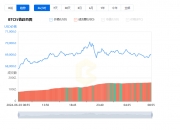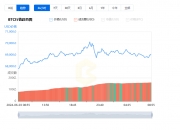概念:区块链是分布式数据存储、点对点传输、共识机制、加密算法等计算机技术的新型应用模式。
Concept: Block chains are new applications of computer technology such as distributed data storage, point-to-point transmission, consensus mechanisms, encryption algorithms, etc.
区块链的本质是一个分布式的公共账本,任何人都可以对这个账本进行核查,但不存在的单一用户可以对它进行控制。在区块链系统中的参与者共同维护账本的封信:它只能按照严格的规则和共识进行修改。
The essence of the block chain is a distributed public account book that anyone can verify, but a single user that does not exist can control.
区块链发展经历了三个阶段:
The development of the block chain has gone through three phases:
1、酝酿期:2009-2012年,经济形态以比特币及其产业生态为主。
1. The gestation period: 2009-2012, with the economy dominated by Bitcoin and its industrial ecology.
2、萌芽期:时期为2012-2015年,区块链随着比特币进入公众视野,新生的钱包支付和汇款公司出现,区块链经济扩散到金融领域。区块链底层技术创新不断。区块链技术从比特币系统中剥离出来。
2. The budding period: 2012-2015, when the block chain entered public view with Bitcoin, new wallet payment and remittance companies emerged, and the block chain economy spread to the financial sector. Technological innovations at the bottom of the block chain continued. The block chain technology was removed from the bitcoin system.
3、发展期:2016年开始探索行业应用,出现了大量区块链创业公司。2017年ICO的火热让区块链受到前所未有的关注。
3. Development period: The exploration of industrial applications began in 2016, with the emergence of a large number of block chain start-ups. In 2017, the ICO heat gave the block chain unprecedented attention.
扩展资料:
extensions:
三区块链的三个特点:
Three characteristics of the three-block chain:
1、区块链的核心思想是去中心化:在区块链系统中,任意节点之间的权利和义务都是均等的,所有的节点都有能力去用计算能力投票,从而保证了得到承认的结果是过半数节点公认的结果。即使遭受严重的黑客攻击,只要黑客控制的节点数不超过全球节点总数的一半,系统就依然能正常运行,数据也不会被篡改。
1. The core idea of the block chain is decentralization: in a block chain system, rights and obligations are equal between any node, and all nodes are capable of voting with computing power, thus ensuring that the recognized result is a recognized result of a majority of nodes. Even in the case of a severe hacking attack, the system will remain functional and the data will not be tampered with as long as the number of nodes controlled by the hackers does not exceed half of the total number of global nodes.
2、区块链最大的颠覆性在于信用的建立:理论上说,区块链技术可以让微信支付和支付宝不再有存在价值。《经济学人》对区块链做了一个形象的比喻:简单地说,它是“一台创造信任的机器”。区块链让人们在互不信任并没有中立中央机构的情况下,能够做到互相协作。打击假币和金融诈骗未来都不需要了。
The most destabilizing part of the block chain is credit-building: theoretically, block-chain technology can make micro-credit payments and payment treasures no longer have any value. The Economist gives an image of the block-chain: simply, it is “a machine that creates trust.” The block-chain allows people to work together without trust or a neutral central agency.
3、区块链的集体维护可以降低成本:在中心化网络体系下,系统的维护和经营依赖于数据中心等平台的运维和经营,成本不可省略。区块链的节点是任何人都可以参与的,每一个节点在参与记录的同时也来验证其他节点记录结果的正确性,维护效率提高,成本降低。
3. Collective maintenance of the block chain can reduce costs: under a centralized network system, the maintenance and operation of the system depends on the operation of platforms, such as data centres, for peacekeeping operations. The nodes of the block chain are open to anyone, and each node is used to verify the validity of the results of other nodes at the same time as they are recorded, to maintain efficiency gains and to reduce costs.
一句话概括,区块链触动的是钱、信任和权力,这些人类赖以生存的根本性基础。
In a nutshell, the chain of blocks touches money, trust and power, the fundamental foundations on which humankind depends for its survival.
参考资料来源:
Source:
注册有任何问题请添加 微信:MVIP619 拉你进入群

打开微信扫一扫
添加客服
进入交流群


















发表评论